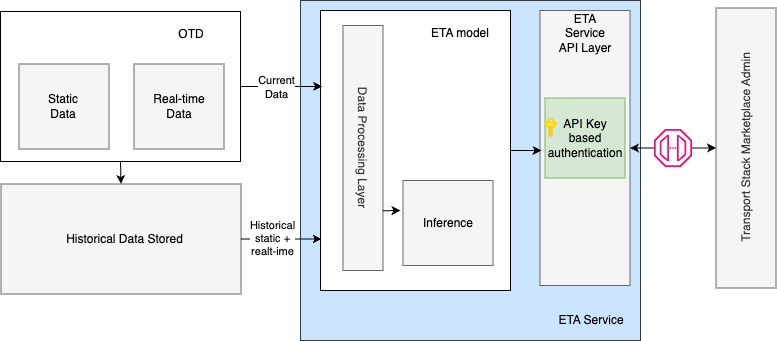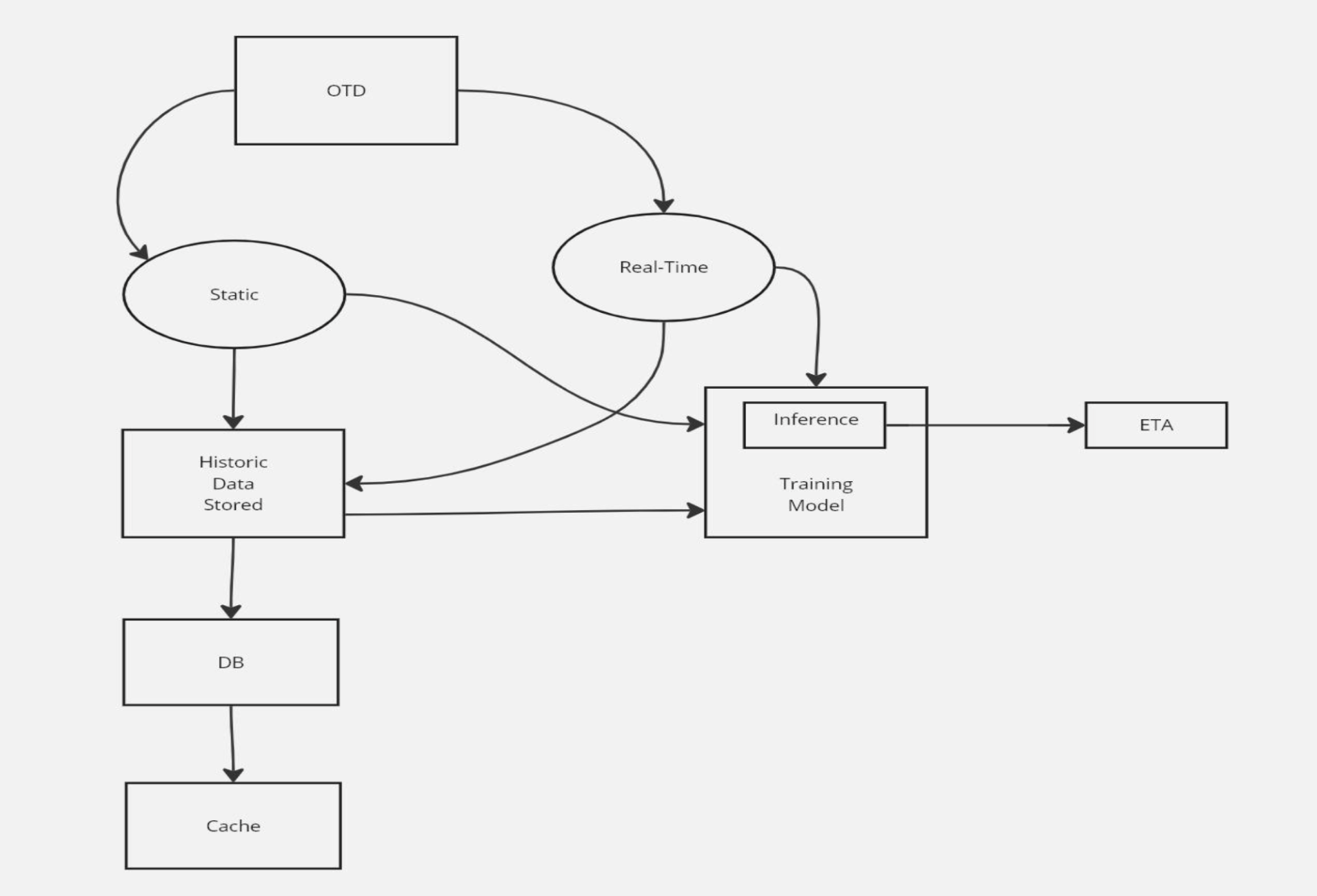ETA Calculator
Introduction
Designed to provide users with accurate and timely predictions of arrival times across different transport modes.
It leverages a combination of static schedules, real-time traffic or transit data, and historical trends to calculate travel durations dynamically.
The ETA Calculator enhances user experience by enabling better planning, reducing uncertainty, and supporting multimodal route optimization.
Why Provide ETA as a Service?
In large and complex bus networks, passengers and operators need reliable, real-time information on bus arrival times.
Static schedules quickly become outdated due to traffic, operational changes, and disruptions.
An ETA (Estimated Time of Arrival) service addresses these challenges by:
- Improving Passenger Experience: Reduces waiting time and uncertainty at stops, enabling better trip planning.
- Increasing Trust: Builds confidence in public transport by providing accurate, up-to-date arrival information.
- Supporting Operations: Helps agencies monitor performance and manage resources dynamically.
- Enabling Ecosystem Integration: Powers journey planners, mobile apps, and physical displays at stops or stations.
Core Functional Capability
The ETA Calculator provides accurate arrival time estimates by integrating various data sources and applying intelligent logic to support reliable travel planning.
| Feature | ETA Calculator |
|---|---|
| Real-time ETA updates | ✔ |
| Historical trend adjustment | ✔ |
| Delay impact estimation | ✔ |
| Mode-specific ETA breakdown | ❌ |
| Confidence level indicator | ❌ |
Additional Enhancements
- Data Fusion: Combines live feeds, static schedules, and historical patterns for higher accuracy.
- Adaptive Refresh Rates: ETA recalculations triggered by data changes or route progress.
- Multi-segment Syncing: Coordinates ETA across different legs of a journey (e.g., bus → metro).
- User Notifications: Push or in-app alerts for ETA changes or delays (where supported).
System Overview
The ETA service combines static (scheduled) and real-time data to provide accurate arrival predictions for buses at any stop.
The approach is adaptable for any city or region, and can be integrated with open data platforms, GTFS-RT feeds, and other sources.

Data Inputs
- Static Data: Schedules, routes, and historical travel times (ideally a year or more). Recent months are weighted more heavily to capture current patterns.
- Real-Time Data: Live bus positions (via GTFS-RT or similar feeds), and optionally, real-time traffic conditions.
Core Process
- Data Collection: Aggregate static and real-time data from open data portals or agency feeds.
- Preprocessing: Clean, validate, and organize data for downstream use.
- Prediction Engine: Use a plug-and-play algorithm or model to estimate arrival times at stops, for both individual vehicles and stops.
- API Layer: Expose ETAs via robust, scalable APIs for integration in apps, displays, and other systems.
ETA Algorithm
The ETA algorithm is built on a hybrid approach combining historical patterns and real-time inputs to predict bus arrival times with high accuracy.

Step-by-Step Process:
-
Segment the Network
The transit network is divided into smaller segments (typically between two adjacent stops or key turning points) to localize prediction and reduce variability. -
Historical Speed Modeling
For each segment, a speed profile is generated using historical GPS data collected over days/weeks/months.- Recent data is weighted more heavily to reflect current patterns.
- Time-of-day and day-of-week variations are accounted for.
- Segments are labeled with average speeds and standard deviations.
-
Real-Time Integration
Real-time vehicle positions are matched to their current segment.
The ETA prediction is adjusted using:- Current location and heading
- Real-time traffic or bus delay
- Deviation from expected speeds on active segments
-
ETA Calculation
Using the current vehicle position, estimated speeds from the historical model, and segment distances, the system:- Computes travel time from the current segment to upcoming stops.
- Updates predictions as new GPS pings are received.
-
Output
The resulting ETA values are returned for use in apps, displays, and APIs.
API Endpoints
1. ETA at Stop
-
Endpoint:
/api/<version>/eta_at_stop?<args> -
Method: GET
-
Arguments:
stop_id: Valid GTFS stop_id
-
Output: Returns stop info and a list of upcoming buses/routes with ETAs and vehicle IDs.
{
"message": "success",
"description": "",
"stop": {
"name": "Example Bus Stop",
"next_stop": "Next Major Stop",
"updated_at": "04:40 PM",
"refresh_time": 30000,
"update_time": "04:40 PM"
},
"buses": [
{
"etas": [
{
"ac": "nac",
"agency": "agency1",
"color": "orange",
"eta": 1,
"vehicle_id": "BUS123",
"timestamp": "1 mins ago"
},
{
"ac": "ac",
"agency": "agency2",
"color": "blue",
"eta": 11,
"vehicle_id": "BUS456",
"timestamp": "1 mins ago"
}
],
"route_id": 1001,
"route_desc": "Route 1",
"route_long_name": "Route 1 Up",
"terminal_stop": "Main Terminal"
}
]
}
- Example Calls:
/api/v1/eta_at_stop/?stop_id=100/api/v1/eta_at_stop/?stop_id=457
2. ETA for a Bus on Upcoming Stops
-
Endpoint:
/api/<version>/bus_eta/<args> -
Method: GET
-
Arguments:
vehicle_id: Valid vehicle_id from GTFS
-
Output: Returns ETA for the bus at upcoming stops.
{
"data": [
{
"id": 27284,
"vehicle_id": "BUS123",
"route_id": 1001,
"upcoming_stop_id": 469,
"upcoming_stop_idx": 44,
"stops_in_btw": 0,
"eta": 1,
"route_long_name": "Route 1 Up"
}
],
"message": "success",
"description": ""
}
- Example Calls:
/api/v1/bus_eta/?vehicle_id=BUS123/api/v1/bus_eta/?vehicle_id=BUS456
Performance & Security Considerations
- Periodic Retraining: The prediction engine should be periodically updated with new data to reflect evolving traffic and operational patterns.
- Testing: Regular unit, integration, and field testing are recommended to ensure accuracy and reliability.
- This ETA service can be integrated into journey planners, mobile apps, and public information systems.
Open Source Repository
The source code and API documentation for the ETA Calculator are available on GitLab:
ETA Calculator GitLab Repository